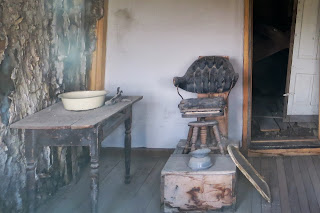
One of the most famous trees in the world,

the Wawona Tree, also known as the Wawona Tunnel Tree was a famous giant sequoia that stood in Mariposa Grove, Yosemite National Park until 1969. It had a height of 227 feet and 90 feet in circumference. It has appeared in portrait from travel brochures and geography texts the world over.
The tunnel was cut through the tree in 1881, enlarging an existing fire scar. The Yosemite Stage and Turnpike Company paid the Scribner brothers $75 to enlarge the burn scar to the tunnel size of 6 1/2 - 8 feet wide, 9 feet high and 26 feet long. The tree also became a popular tourist attraction and visitors were often photographed driving through or standing in the tunnel.
The Wawona Tree fell in 1969 under a heavy load of snow on its crown. The giant sequoia is estimated to have been 2,300 years old.
We did not see the tree but had hear the stories of "drive through" trees. When visiting the Redwood Forest National Park Center, I enquired about drive through or tunnel trees and was informed that the National Park service does not endorse the drive through trees, however there was one such tree along the Redwood Highway located on private land.


We decided to investigate, and we found it in Klamath, California.
This privately owned tourist attraction was created for the benefit of those people who desire the unique experience of driving through a healthy, living Redwood tree.
The Tour-Thur Tree is approximately 785 years old and, at some time in the distant past was scarred by fire. The tree, because of it's giant size was spared, along with neighboring trees, when the area was logged in 1967. The tunnel through the tree was completed in May, 1976, and opened to the public the following month.
The opening in 7'4" wide and 9'6" high, permitting the passage of all standard cars, vans and pickups.
The tree is 17 feet in diameter at eye level. It is about 90 feet tall to the point where the top was blown off. Side branches give an overall height of 183 feet.
You can John in the car driving through the tree.
One of those "tourist" things to do!?!!
See more about the Redwoods in the blog below.
More later,
Candy and Johnny
 Sweet Creek Falls is a gem of a hike, nestled in the hills between Mapleton and Eugene, Oregon and is part of the Suislaw National Forest. The total hike is a fairly easy 3.8 miles round trip, with only a 500 foot elevation gain. The trail head is a little difficult to find and there are not a lot of signs to direct you to the parking area.
Sweet Creek Falls is a gem of a hike, nestled in the hills between Mapleton and Eugene, Oregon and is part of the Suislaw National Forest. The total hike is a fairly easy 3.8 miles round trip, with only a 500 foot elevation gain. The trail head is a little difficult to find and there are not a lot of signs to direct you to the parking area. seventy-five feet into a pristine blue pool.
seventy-five feet into a pristine blue pool.
























































